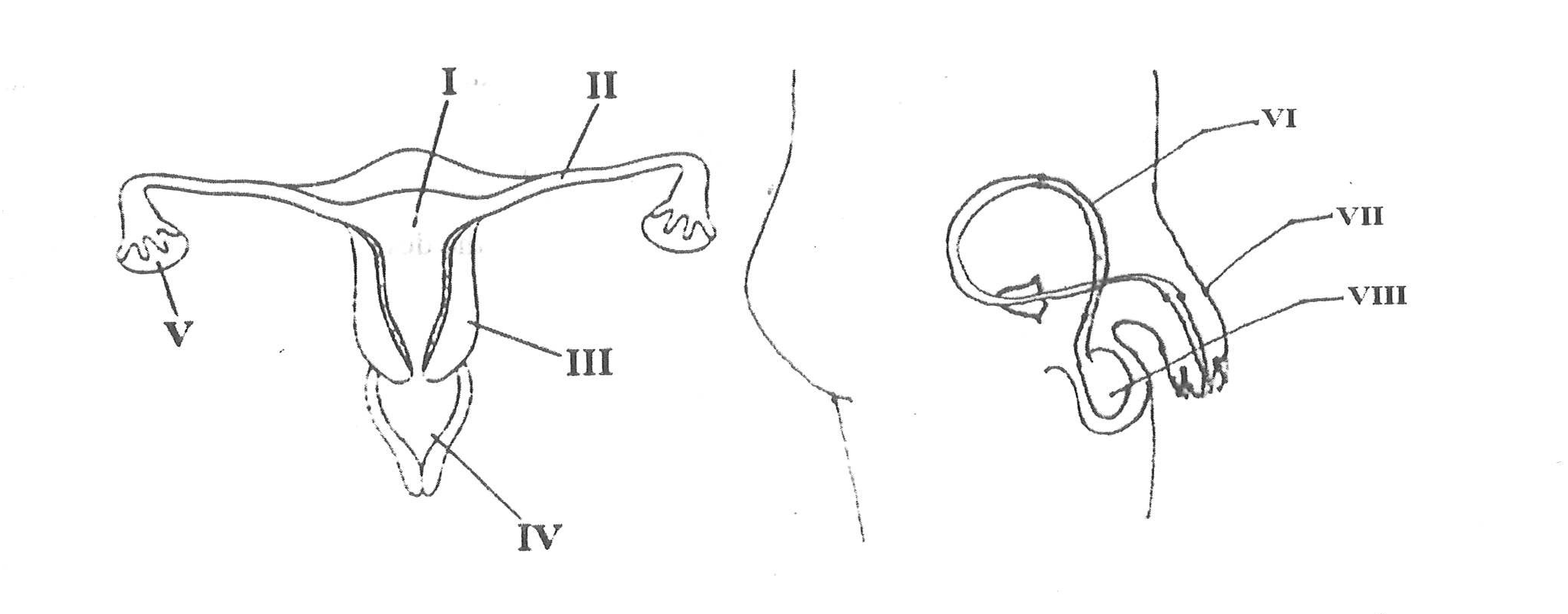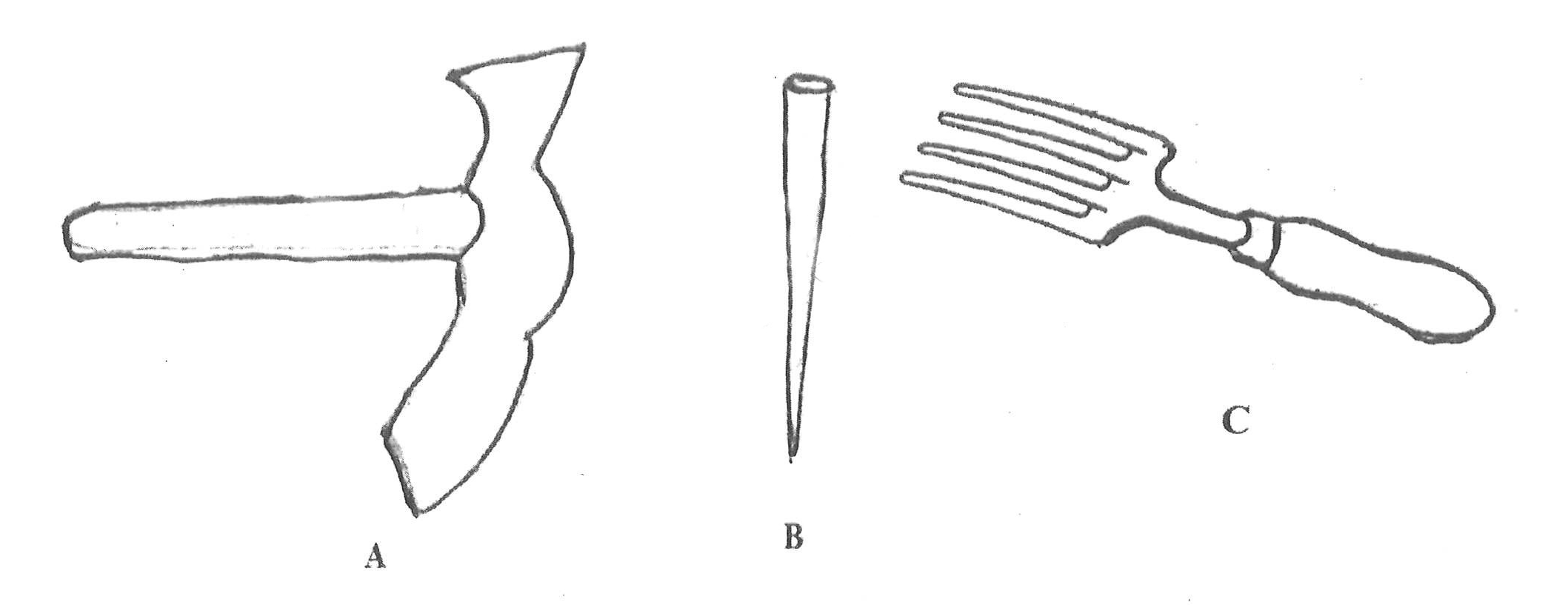ESSAY
This paper is in two parts: I and II. Answer Question 1 in part I and any other four question in part II
PART I
[40 marks]
Answer all of Question 1
-
The diagrams below are illustrations of the male and female reproductive systems for humans.
Study them carefully and answer the questions that follow.

-
Name each of the parts labelled I, II, V, VI, VII, and VIII.
-
State the function of each of the parts labelled III, IV, and VII.
-
Name the labelled part where each of the following processes take place:
α) Fertilization;
β) Production of sperm;
γ) Ovulation.
-
Name two common infectious diseases that affect both the male and female reproductive system.
-
-
The diagrams below are illustrations of different devices used in the farm.
Study them carefully and answer the questions that follow.

-
Give a common name for the devices illustrated.
-
Name each of the devices labelled A, B, and C.
-
State one use of each of the devices named in (ii).
-
State two effects of the use of the device C on the soil.
-
State two ways of prolonging the usefulness of the device labelled A.
-
-
-
Draw the symbols for each of the following electronic components:
α) Resistor;
β) (p-n junction) diode;
γ) Cell;
δ) Light Emitting Diode / LED.
-
Use the symbols drawn in (i) together with a switch to draw a circuit diagram to demonstrate forward biasing of a (p-n junction) diode and the light emitting diode.
-
State the effect of the resistor on the (p-n junction) diode and the light emitting diode when the circuit is closed.
-
-
The following activities were carried out in the laboratory.
Study them carefully and answer the questions that follow.
-
10 g of iodated salt was added to 150 ml of water in a beaker. The mixture was stirred thoroughly.
-
Vegetable oil was added to a quantity of water in a corked flask and shaken vigorously, then allowed to stand for some time.
-
Few grams of grinded charcoal were added to water in a beaker and stirred vigorously, then allowed to stand.
-
State what will be observed in each of the activities I, II, and III.
-
Suggest an aim for the experiment.
-
State one difference between what is observed in I and III.
-
State a method of separation for the activity carried out in II.
-